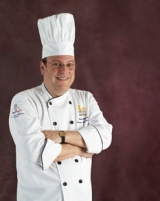
Lamb on the Menu – Fine Dining and Beyond
While rack of lamb remains a staple at white tablecloth restaurants, lamb is appearing more and more beyond fine dining. There’s more to teaching lamb than just chops.

While rack of lamb remains a staple at white tablecloth restaurants, lamb is appearing more and more beyond fine dining. There’s more to teaching lamb than just chops.

March is National Nutrition Month. so there’s no time better time than now to equip students with the label-reading knowledge necessary to select the foods that best serve their future customers’ nutrition needs and demands.

Global flavor innovations are detailed in this annual report that focuses on trends from heat and tang to culinary infused libations.

Mark your calendars for March 30 to creatively promote using whole grains in lesson plans and class materials to be a part of the Annual Whole Grain Sampling Day.

In January Dr. Tim Ryan, CIA president, was named among the 50 most powerful people in the world of food by two publications.

The most important quality of a culinary program is the quality of its faculty and not the facilities. Spending time to identify a perspective educator’s “fit” is the most important time you will invest in your program.

Dr. Fred Mayo, CHE, CHT, discusses how self-evaluation helps students become more objective about the quality of their online work. And, that objectivity carries over to peer-evaluation too.

Seafood sustainability involves more than whether a fish species can survive the catch. Chef Adam Weiner begins to educate educators on the many aspects that make a seafood entrée truly sustainable.

The Women’s Foodservice Forum (WFF), the industry’s premiere leadership development organization, announced the appointment of its President and CEO, Hattie Hill, to the 2016 National Restaurant Association (NRA) board of directors. With more than three decades of food industry expertise, Hill is a globally-renowned thought leader, senior executive development expert, and best-selling author.

School foodservice initiative receives more than 700 entries while promoting better Nutrition with apple sauce.